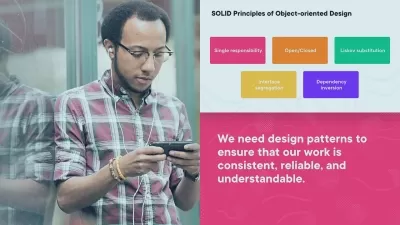Domain-Driven Design Fundamentals
Steve Smith
4:47:13
Description
This course will teach you the fundamentals of Domain- Driven Design (DDD) through a demonstration of customer interactions and a complex demo application, along with advice from renowned DDD experts.
What You'll Learn?
In this course, Domain-Driven Design Fundamentals, you’ll learn the key concepts and means to implement DDD. First, you’ll explore how to model a software problem. Next, you’ll discover the elements of DDD. Finally, you’ll learn how to leverage DDD in a sample software application. When you’re finished with this course, you’ll have the skills and knowledge of Domain-Driven Design needed to unravel the complexity of your domain, build smarter software and gain an even deeper understanding of DDD.
More details
User Reviews
Rating
Steve Smith
Instructor's Courses
Pluralsight
View courses Pluralsight- language english
- Training sessions 95
- duration 4:47:13
- level preliminary
- Release Date 2023/12/14











